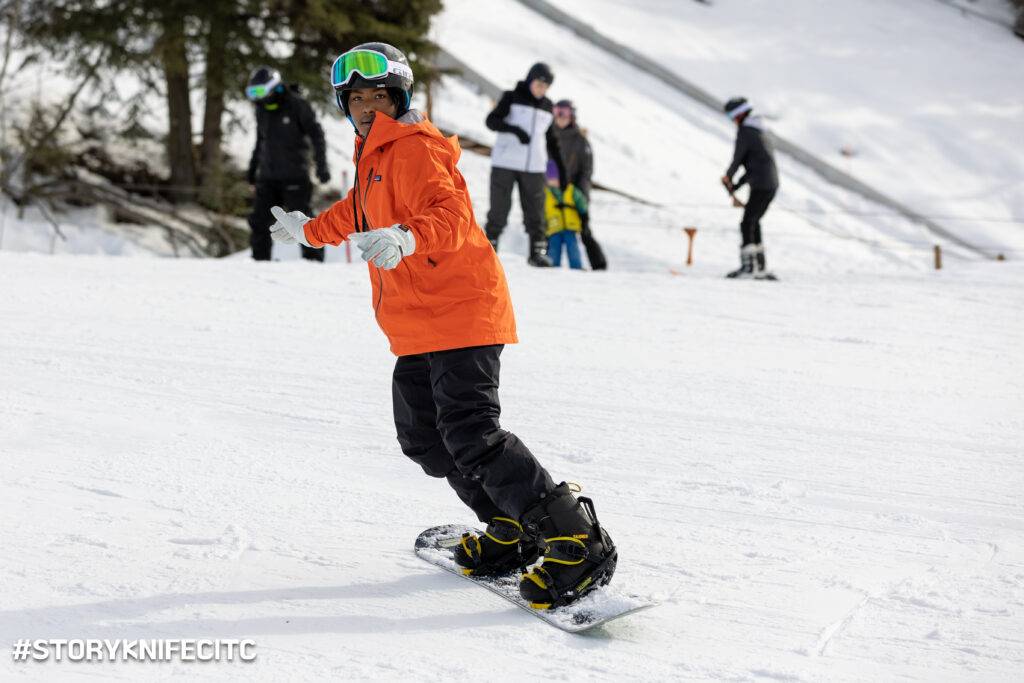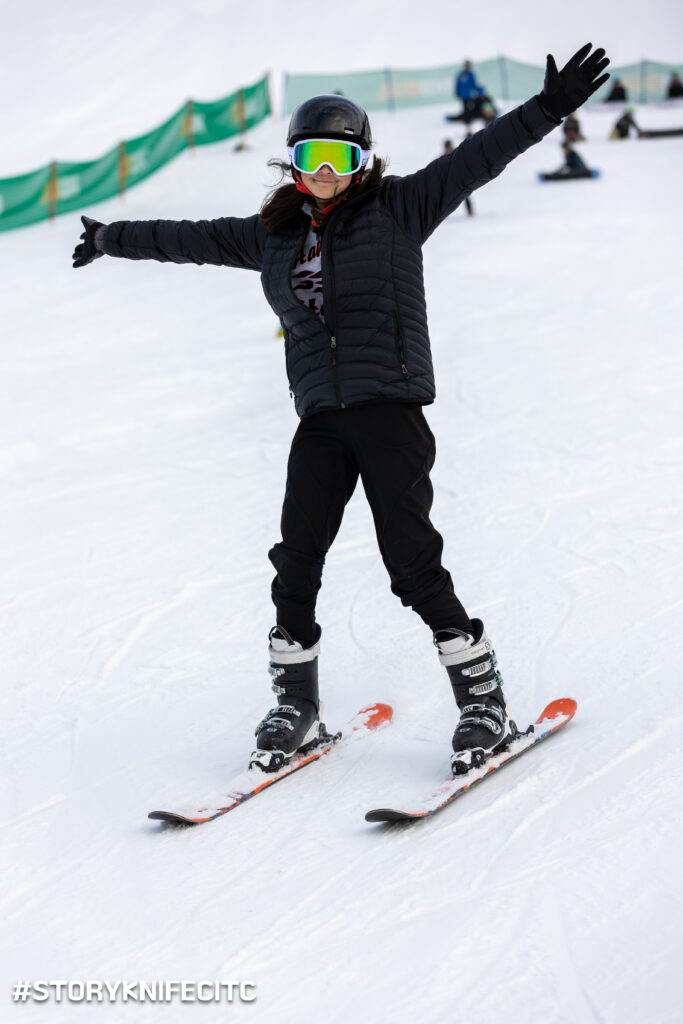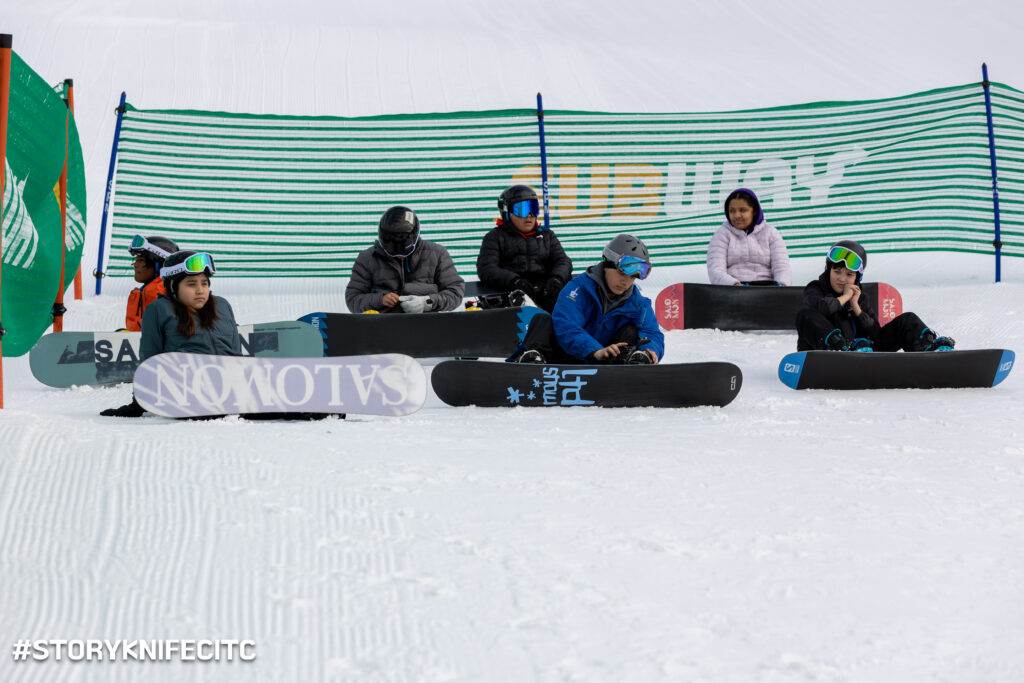11 Apr From Zero to Zoom on Dena’ina Land
Share Winter takes indigenous teens to the slopes

Calvin Oktollik, 16, zooms across the snow. Then, pressing his heels back, he brings his snowboard to a stop. He moves like an expert.
So it’s pretty surprising that he only started learning how to snowboard three days ago.
“I didn’t know how to snowboard at all. Now I’m keeping up with people who’ve been snowboarding and skiing for years,” Calvin said on the final day of CITC’s Share Winter program, which aims to enrich the lives of youth through winter sports.
As a Share Winter grant recipient this year, CITC’s Youth Empowerment Services (YES) department partnered with Hilltop Ski Area to provide lessons in downhill skiing and snowboarding to Alaska Native/American Indian youth. Kids who participated in the Share Winter camp were also provided gear and transportation to and from Hilltop—all in an effort to make winter sports more accessible to Native youth.

“The goal of Share Winter is to get Native youth into the outdoors and on skis to experience their land in the winter,” said Lael Bach, YES program manager.
According to the National Ski Areas Association, only 0.7 percent of skiers in the 2020-2021 season were Native—compared to White skiers, who make up 87.5 percent of the group.
“Here in Anchorage, this is the Dena’ina people’s land—but they’re not necessarily on it, enjoying winter activities outdoors, because of cost and accessibility,” said Lael.
“When I actually think about it,” said Calvin, “I feel that all people should be able to connect with the land—but especially Natives, considering we originate from it.”
Forty-four CITC youth started the week on wobbly legs as they learned the basics of downhill skiing and snowboarding. By day two, many of the young people were gaining confidence and learning J-stops and how to herringbone uphill.
Anchor Lutheran student Ginger Johnson, 14, enjoyed trying her hand—or feet—at learning something new.
“I was a little scared. Doing the J-stop was the hardest for me to learn,” she shared. “But it was fun, even though I fell a lot the first two days. I’m getting the hang of it.”
Calvin, a South Anchorage high school student who has been engaging with CITC youth programs since he was nine or ten, had only been on a snowboard once or twice before the Share Winter camp, which took place March 27 – 30.
“This has been awesome!” he said. “The hardest part was of learning was probably the balancing part. But I got the hang of it the first day, and we started going to the bunny hill. That’s where I learned to turn. It’s been really helpful.”

This is the first year CITC has received a Share Winter grant. Because the Share Winter foundation aims to build sustainable winter sports programs, local programs typically receive between three and five years of support; CITC will reapply for funding in hopes of hosting another camp next year.
The YES team used a portion of this year’s funds to purchase equipment that can be used again for future Share Winter programs. Thanks to Blue and Gold Boardshop, Moose Jaw, and Turtle Fur for their generous discounts and donations of gear that will benefit our Native youth as they hit the slopes!
Keep an eye out next winter for more opportunities to connect with Dena’ina land through winter sports. For more information about CITC’s youth programming, visit citci.org/youth-services. Or follow CITC to learn about additional opportunities.


